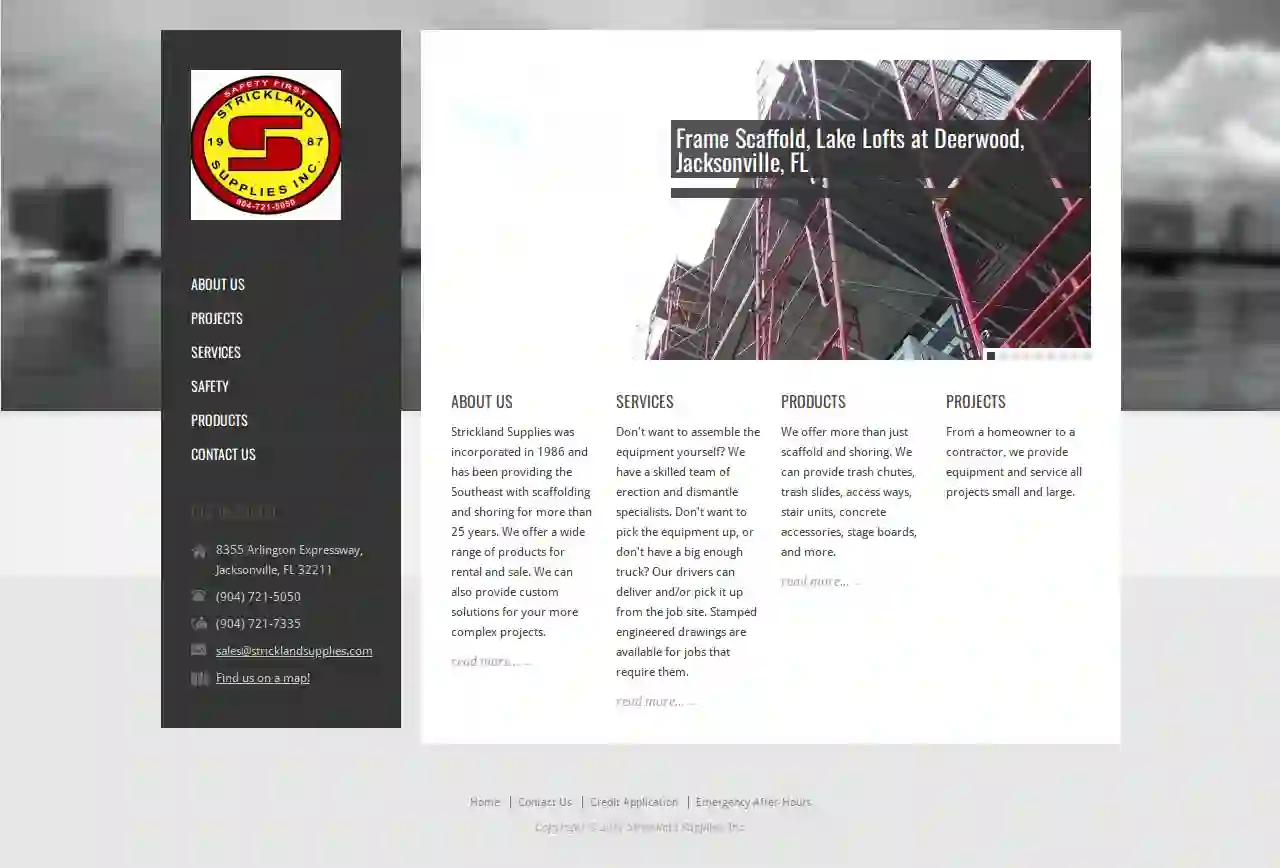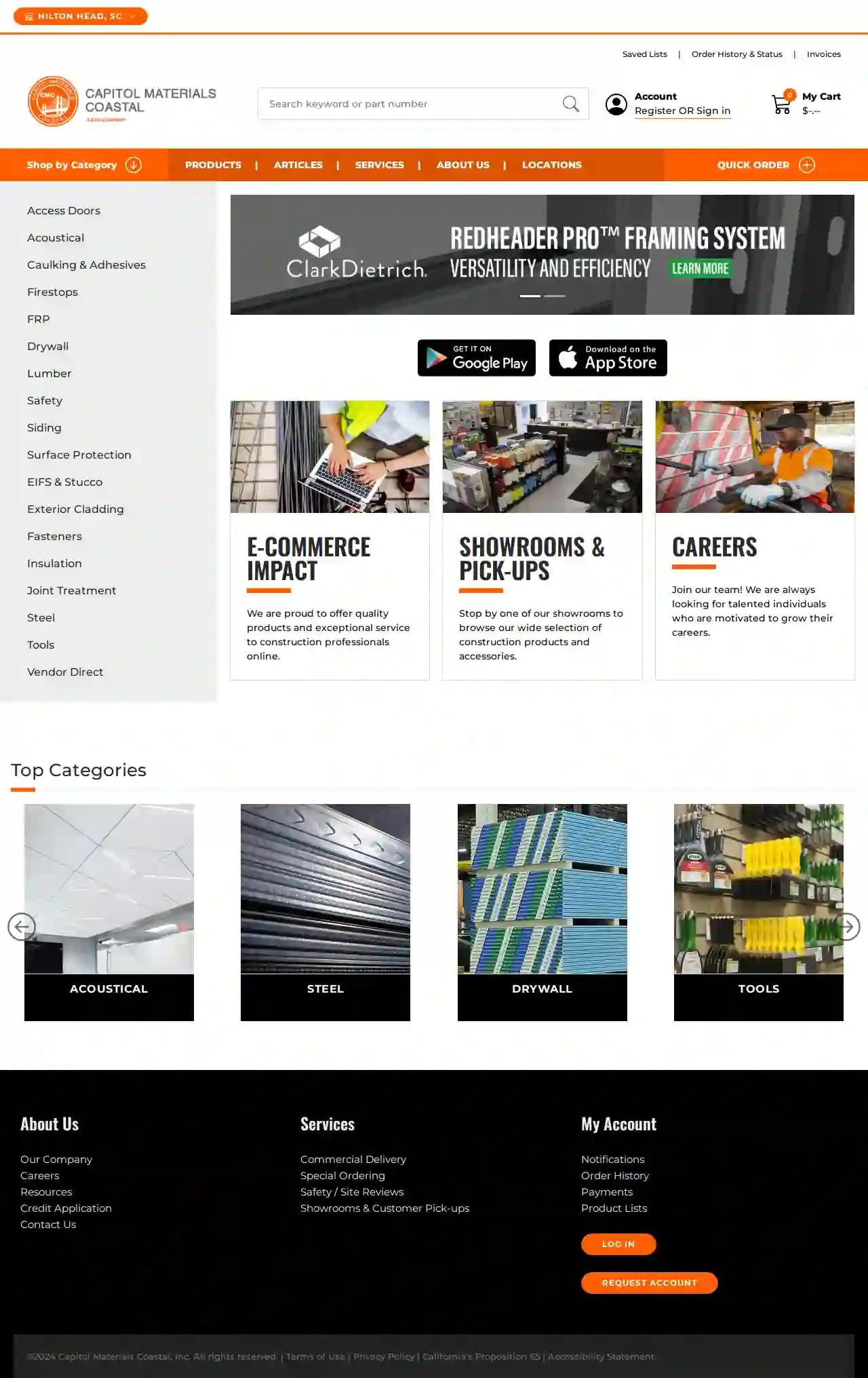Scaffolding Companies Lexington
Find the best Scaffolding Companies in Lexington
Receive up to 3 Construction Scaffolding quotes for your project today! Compare profiles, reviews, accreditations, portfolio, etc... and choose the best offer.

Scaffolding Solutions
3.54 reviewsSuite 100, 123 Main St, Richmond, 23238, USScaffolding Solutions is a top-notch business that provides exceptional service, safety, and pricing for all your access needs. With years of experience in the industry, they have established themselves as the go-to company for scaffolding and shoring solutions. Their team of experts, led by Frank Giuliano, is dedicated to providing top-notch customer service, ensuring that every project is completed safely, efficiently, and within budget. Whether you're a commercial, industrial, or residential client, Scaffolding Solutions has the expertise and resources to meet your needs. From construction containment to custom and specialty scaffolding, they offer a wide range of services to help you achieve your goals. With a strong commitment to safety, quality, and customer satisfaction, Scaffolding Solutions is the perfect partner for any project. Contact them today to learn more about their services and how they can help you succeed.
- Services
- Why Us?
- Accreditations
- Our Team
- Testimonials
- Gallery
Get Quote
North Carolina Scaffolding
1515 Mechanical Blvd, Garner, 27529, USNorth Carolina Scaffolding: Your Trusted Partner for Safe and Reliable Access Solutions At North Carolina Scaffolding, a branch of www.contractorsaccess.com, we specialize in providing superior scaffolding, hoisting, shoring, and engineering solutions tailored to meet your specific project needs across North Carolina. We understand that many projects require working at heights, and that's why we're dedicated to delivering safe, efficient, and reliable access solutions that allow you to focus on completing your project on time and within budget. Our team of experienced professionals is committed to providing exceptional customer service and support. We work closely with our clients to understand their unique requirements and develop customized solutions that meet their specific needs. Whether you need suspended scaffolding, commercial scaffolding, industrial scaffolding, stair towers, sidewalk canopies, shoring, or trash chutes, we have the expertise and resources to deliver. We are proud to serve clients throughout North Carolina, including Raleigh, Durham, Fayetteville, Greensboro, Goldsboro, Rocky Mount, Garner, Wake Forest, Chapel Hill, Henderson, Burlington, Wilson, Apex, Asheboro, Kinston, Tarboro, Clayton, and Williamston. Contact us today to learn more about how we can help you with your next project.
- Services
- Why Us?
- Accreditations
- Our Team
- Testimonials
- Gallery
Get Quote
American Scaffold
3.65 reviewsPO Box 2364, Daphne, 36526, USYour Expert Solution for Challenging Workplace Access and Environmental Containment Needs Unmatched Onsite Leadership and Specialist Expertise for Industrial and Shipyard Projects Premier Scaffold Solutions for Industrial and Shipyard Excellence Comprehensive Expertise and Solutions for Workplace Access and Environmental Containment As the premier provider of scaffold solutions, American Scaffold is an unbeatable combination of onsite leadership and veteran industrial and ship scaffold specialists, with an extensive equipment inventory optimized for industrial and shipyard work at our fingertips. This means we can provide the best solutions for workplace access requirements and environmental enclosure integrity, ensuring expedited staging and dismantling times. Our innovative framing and containment systems facilitate worker access and optimize onsite productivity, enabling our customers to get back to work quickly and efficiently. The American Scaffold Advantage Unified and High-Performing Team Our unbeatable team operates cohesively, combining expertise and dedication to consistently exceed client expectations. Ability to Surge Our strong infrastructure, national presence, and financial backing enable us to quickly scale up to support large projects, efficiently handling significant demands. Service Responsiveness and Reach We pride ourselves on our swift and reliable service, ensuring that we are always ready to meet the needs of our clients, no matter what the scale or complexity of the project. Commitment to Excellence Our team is dedicated to delivering top-notch results, ensuring our customers receive unparalleled service and the highest quality outcomes. Dedicated to supporting the structural repair and preservation of U.S. Navy ships and other critical projects, making sure our clients shine.
- Services
- Why Us?
- Testimonials
- Gallery
Get Quote
Strickland Supplies, Inc.
4.610 reviews8355 Arlington Expressway, Jacksonville, 32211, USStrickland Supplies, Inc. is a family-owned and operated corporation in Jacksonville, Florida. Founded in 1962, and incorporated in 1986, Strickland Supplies, Inc. has been serving Northeast Florida and beyond for well over 50 years. Over these years, we have been able to develop a solid reputation based on our integrity, service, and commitment to our customers. We take pride in our personal service, quality products, and outstanding safety record for over 50 years. Throughout this time, the staff at Strickland Supplies, Inc. has been able to provide our customers, from contractors to homeowners, with superior products that meet the demands of their jobs. Our staff has over 75 years of cumulative industry experience in scaffolding, forming and shoring. We are able to provide engineered drawings and on-site inspections, as well as create specialty designs to fit unique projects.
- Services
- Why Us?
- Accreditations
- Gallery
Get Quote
ScaffoldBox Jacksonville
979 Lane Avenue South, Jacksonville, 32205, USSelf-Service Scaffolding Rentals Rent Scaffolding Today. Scaffold Rental near you Rent Scaffolding Today. Scaffold Rental near you Rent Scaffolding Today. Scaffold Rental near you Rent Scaffolding Today. Scaffold Rental near you Rent Scaffolding Today Self-Service Scaffolding Rentals Rent Scaffolding Today. Scaffold Rental near you Rent Scaffolding Today. Scaffold Rental near you Rent Scaffolding Today. Scaffold Rental near you Rent Scaffolding Today. Scaffold Rental near you Rent Scaffolding Today ScaffoldBox Kiosks™ #Las Vegas Right between Henderson and Las Vegas #Salt Lake City Riverton. Near 12600 S and Bangerter #Denver Denver, Auora, or even cabin work near Vail! So hardworking people can get the job done easier Why Choose ScaffoldBox? We offer convenient, affordable scaffolding rentals for single tower projects. Let us help you get work done safer and faster! Our Services Limited delivery options are available in specific ScaffoldBox Cities. Salt Lake City, UT Las Vegas / Henderson, NV Denver, CO Please contact us if delivery could be required for your project. Se habla Espanol Get Started Tap the messaging icon at the bottom corner of this website. You'll get in touch with a scaffolding professional to schedule your scaffolding rental pickup. Work Smarter not Harder.
- Services
- Why Us?
- Gallery
Get Quote
Capitol Materials Coastal
4.537 reviewsCharleston, SC, 4550 Gaynor Ave., 29405, USE-COMMERCE IMPACT We are proud to offer quality products and exceptional service to construction professionals online. SHOWROOMS & PICK-UPS Stop by one of our showrooms to browse our wide selection of construction products and accessories. CAREERS Join our team! We are always looking for talented individuals who are motivated to grow their careers.
- Services
- Why Us?
- Gallery
Get Quote
Brace Integrated Services
51 reviews123 Main St, Springfield, 12345, USBrace is a leading provider of innovative solutions, dedicated to enhancing user experiences through cutting-edge technology. With a strong mission to empower businesses and individuals, we strive to deliver exceptional services that cater to diverse needs. Our team of experts, with years of combined experience, ensures that every project undertaken is meticulously planned and executed to perfection. We take pride in our fully accredited and insured status, reflecting our commitment to quality and reliability. Our testimonials speak volumes about our dedication to customer satisfaction, and we continuously work towards improving our offerings to serve you better.
- Services
- Why Us?
- Accreditations
- Our Team
- Testimonials
Get Quote
BrandSafway Solutions Raleigh-Durham
2.86 reviews1234 BrandSafway Drive, Raleigh, 27560, USBrandSafway is a leading provider of access solutions, including scaffolding, aerial work platforms, and forming and shoring equipment. With a strong commitment to safety, quality, and customer satisfaction, BrandSafway offers comprehensive solutions tailored to meet the unique needs of clients across various industries. Their team of experienced professionals works closely with clients to understand their requirements and deliver customized solutions that enhance efficiency, productivity, and safety on site. BrandSafway's Raleigh-Durham branch serves the local community with a wide range of services and equipment, backed by their extensive experience and expertise.
- Services
- Why Us?
- Accreditations
- Our Team
- Testimonials
Get Quote- As
Asheville Hwy Rental
4.2172 reviewsAsheville, US- Services
- Why Us?
Get Quote - To
Tool & Truck Rental at The Home Depot
3.720 reviewsGreensboro, US- Services
- Why Us?
Get Quote
Over 2,353+ Scaffolding Businesses on our directory
Our scaffolding companies operate in Lexington & surrounding areas!
ScaffoldingHQ has curated and vetted the Best Scaffolding Businesses arround Lexington. Find a reliable business today.
Frequently Asked Questions About Scaffolding Companies
- Project Size and Complexity: The height, configuration, and accessibility of the scaffolding will influence the amount of materials and labor required.
- Scaffolding Type: Different scaffolding systems (tube and clamp, system scaffolding, suspended scaffolding) have varying costs.
- Duration of Rental: The length of time you need the scaffolding will affect the overall rental price.
- Location: Labor costs and material availability can differ based on your location.
- Additional Services: Some companies may offer additional services like erection, dismantling, or transportation, which can add to the cost.
- Hire Professionals: Just like erection, dismantling should be done by qualified and experienced scaffolding erectors.
- Reverse the Erection Process: The dismantling process should generally follow the reverse order of erection.
- Clear the Area: Ensure the area below is free from people and obstacles.
- Lower Materials Safely: Use ropes or other safe methods to lower dismantled components to the ground.
- Inspect Components: As components are removed, inspect them for damage and store them properly for future use.
- Workers: Consider the number of workers on the scaffolding at any given time.
- Materials: Include the weight of building materials, tools, and equipment being used on the platform.
- Environmental Factors: Factor in potential loads from wind or snow, especially for taller scaffolding structures.
- Work at Height Regulations 2005: Covers all work at height and outlines the need for risk assessments, competent erectors, and safe equipment.
- Construction (Design and Management) Regulations 2015 (CDM): Applies to construction projects and requires planning for scaffolding safety throughout the project lifecycle.
- British Standard BS EN 12811: Sets standards for the design, manufacture, and testing of scaffolding components.
- NASC (National Access & Scaffolding Confederation) Guidance: Provides industry best practices and safety recommendations for scaffolding.
How much does scaffolding cost to rent in the USA?
How do I dismantle scaffolding safely?
What is the weight limit for scaffolding?
What are the safety regulations for scaffolding in the USA?
How much does scaffolding cost to hire in the USA?
- Project Size and Complexity: The height, configuration, and accessibility of the scaffolding will influence the amount of materials and labor required.
- Scaffolding Type: Different scaffolding systems (tube and clamp, system scaffolding, suspended scaffolding) have varying costs.
- Duration of Rental: The length of time you need the scaffolding will affect the overall rental price.
- Location: Labor costs and material availability can differ based on your location.
- Additional Services: Some companies may offer additional services like erection, dismantling, or transportation, which can add to the cost.
How do I dismantle scaffolding safely?
- Hire Professionals: Just like erection, dismantling should be done by qualified and experienced scaffolding erectors.
- Reverse the Erection Process: The dismantling process should generally follow the reverse order of erection.
- Clear the Area: Ensure the area below is free from people and obstacles.
- Lower Materials Safely: Use ropes or other safe methods to lower dismantled components to the ground.
- Inspect Components: As components are removed, inspect them for damage and store them properly for future use.
What is the weight limit for scaffolding?
- Workers: Consider the number of workers on the scaffolding at any given time.
- Materials: Include the weight of building materials, tools, and equipment being used on the platform.
- Environmental Factors: Factor in potential loads from wind or snow, especially for taller scaffolding structures.
What are the safety regulations for scaffolding in the USA?
- Work at Height Regulations 2005: Covers all work at height and outlines the need for risk assessments, competent erectors, and safe equipment.
- Construction (Design and Management) Regulations 2015 (CDM): Applies to construction projects and requires planning for scaffolding safety throughout the project lifecycle.
- British Standard BS EN 12811: Sets standards for the design, manufacture, and testing of scaffolding components.
- NASC (National Access & Scaffolding Confederation) Guidance: Provides industry best practices and safety recommendations for scaffolding.